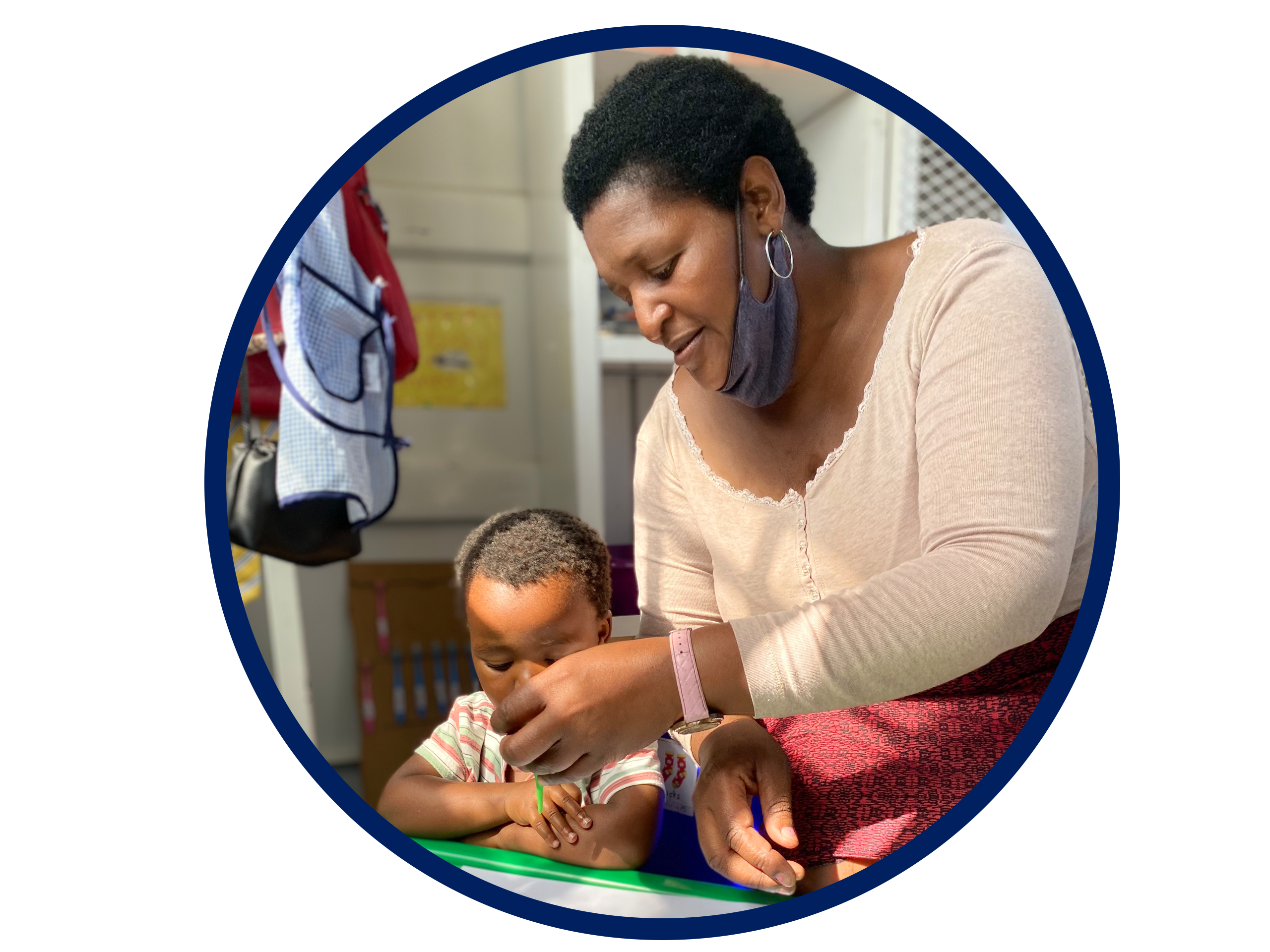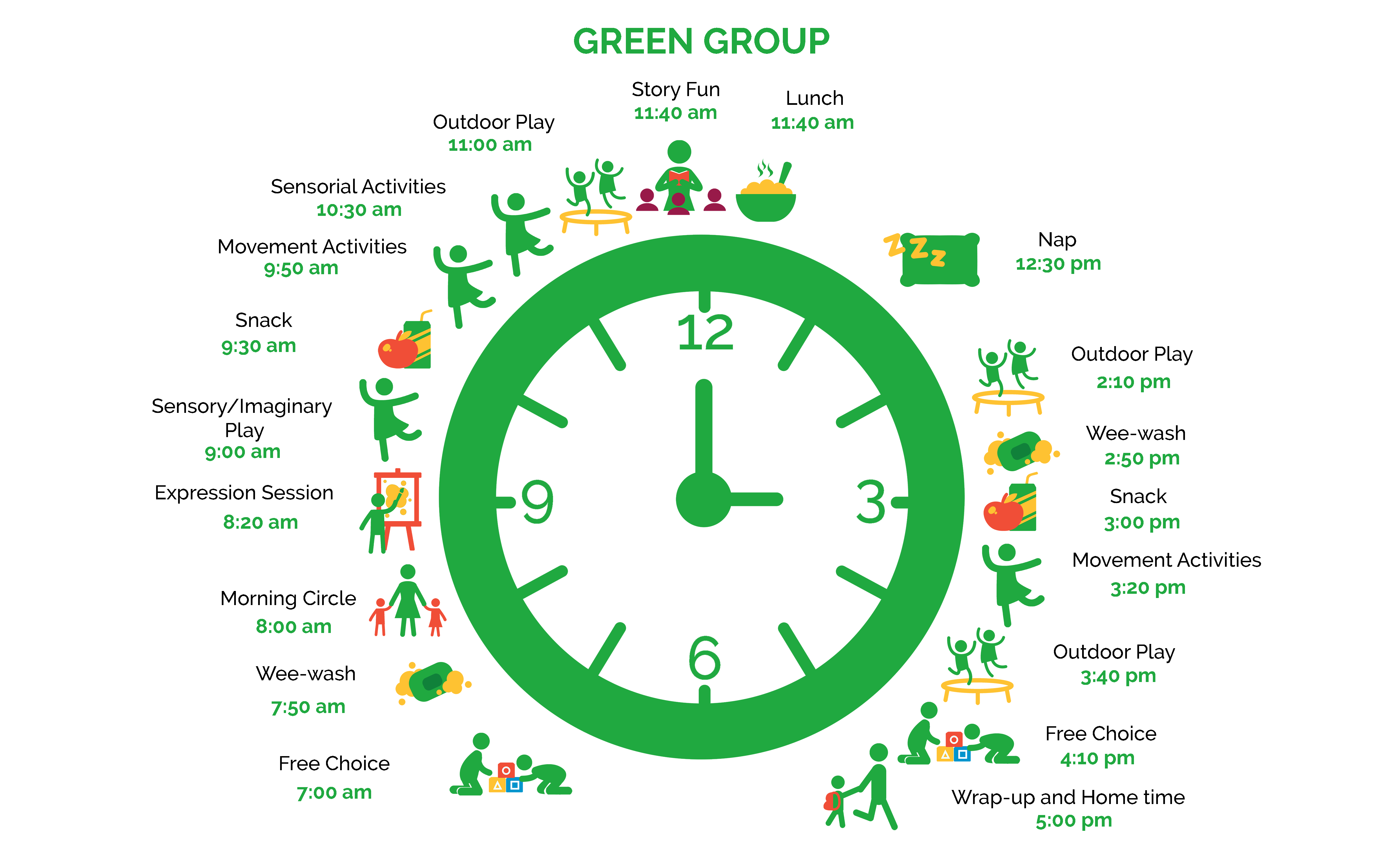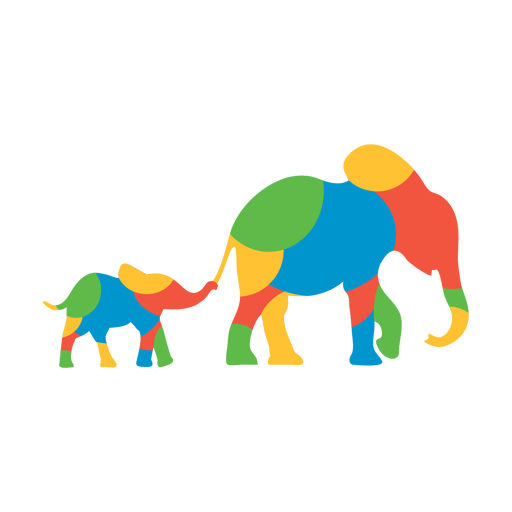
Green Group: Turning Two
Toddlers in green group are moving out of their “parallel play” phase, becoming more social and confident as they learn to communicate and cooperate in a group environment. Our green group teachers love seeing each child in their classes developing a positive sense of self!
Development and Learning Objectives for the Green Group:
Language, Literacy and Creative Expression
Maths and Scientific Reasoning
Physical, Social and Emotional well-being
Language, literacy and creative expression
Creative Expression
1. Engages in music, art and dramatic play
a. Sings along and copies actions during songs
b. Independently makes rhythmic / melodic sounds using found objects and musical instruments
c. Dresses up as / pretends plays in the role of real and fictional characters
Oral Language Development
2. Receptive and expressive vocabulary development
f. Learns at least 1 new word per week
g. Uses new vocabulary words while pointing to the item and/or gesturing to indicate the action/item they relate to
3. Coherent expression of personal ideas, thoughts, and feelings
d. Attempts at communication through speech are understandable at times
e. Strings 3-5 words together to form phrases which make sense and are relevant
f. Expresses a full sentence of thoughts in response to questions directed at them by an adult
g. Successfully engages in meaningful multi-exchange conversations with peers and adults
4. Response to text
a. Role-plays parts of a story or scenario with teacher input
Emergent Literacy
5. Phonological Awareness
a. Chants rhymes emphasizes rhyming words and/or pronounces tongue twisters or sentences with alliteration correctly
6. Phoneme-grapheme correspondence
Emergent Writing
7. Print awareness / concepts
a. Discriminates between text and illustrations
8. Tracing, transcription and writing
a. Scribbles letter-like symbolic representations, imitating the writing process; traces letter shapes in the air
Maths and Scientific Reasoning
Quantitative Concepts
9. Estimation
a. Engages in perceptual subitizing
10. Verbal and object counting
a. Counts in a ‘sing-song’ fashion up to 5 (imitates teacher counting objects).
b. Tries to keep track of a small number of objects during a game, using counting and quantity matching
c. Counts in a ‘sing-song’ fashion up to 20
11. Numeral recognition, depiction and quantity correspondence
a. Numeral (Arabic) recognition up to 10
12. Relative magnitude and Measurement
a. Indicates the relative size of two objects (bigger/smaller)
b. Indicates relative height of two people/objects (taller/shorter)
Geometry and Spatial Relationships
13. Shape recognition and manipulation
a. Identifies triangles, squares, circles, rectangles, and ovals
14. Position, Directions and Time
a. Demonstrates understanding of ‘above / on top of’, ‘below / underneath’
b. Demonstrates understanding of ‘in front of’, ‘behind’, ‘next to / beside’
Reasoning
15. Classification
a. Groups objects based on simple observable characteristics (e.g. colour)
16. Planning
a. Responds to questions about intended actions
17. Hypothesis Formation
a. Takes time to look at, touch, and explore objects and happenings around him/her
pHysical and social emotional wellbeing
Social Emotional Development
18. Self-regulation
d. Able to differentiate between and express personal needs eg. toileting or thirst
e. Plays alongside peers (parallel play)
f. Practices sharing and cooperates with peers during group activities
g. Describes own feelings and possible sources
19. Response to expectations
a. Pays attention and copies/mimics basic actions
b. Listens to and follows reasonable direct requests from teacher
c. Is aware of (i.e. can describe) classroom routines and behavioral norms
20. Positive sense of self and cultural identity
a. Describes personal preferences (what do you like?)
21. Persistence in the face of challenges
a. Displays willingness to attempt new tasks with support/prompting (doesn’t always return to the same toy/game)
Response to expectations
a. Pays attention and copies/mimics basic actions
b. Listens to and follows reasonable direct requests from teacher
20. The positive sense of self and cultural identity
21. Persistence in the face of challenges
a. Displays willingness to attempt new tasks with support/prompting (doesn’t always return to the same toy/game)
Physical Development
22. Gross motor coordination
j. Walks independently
k. Walks along a line for at least 2 meters (balance)
l. Jumps with two feet
m. Throws a bean bag/ball towards intended target
23. Fine motor coordination
e. Manipulates blocks , sand, play-dough etc. to build multi-level structures
f. Holds/uses simple objects as intended eg. crayons, basic puzzles
g. Pours water from a jug into a designated container without spilling
h. Threads shoelaces through punch holes
Green Group Daily Routine

